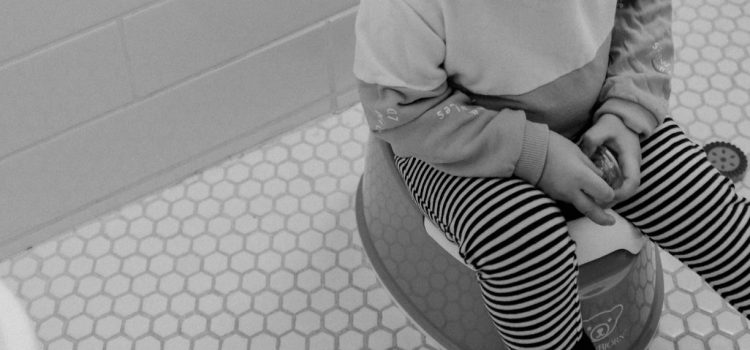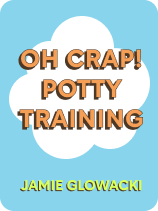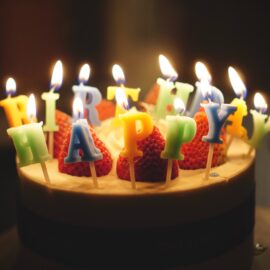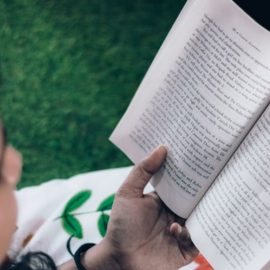

This article is an excerpt from the Shortform book guide to "Oh Crap! Potty Training" by Jamie Glowacki. Shortform has the world's best summaries and analyses of books you should be reading.
Like this article? Sign up for a free trial here .
What are the five Oh Crap! Potty Training blocks? How do you know when it’s time to move to the next block?
In her book Oh Crap! Potty Training, parenting coach and social worker Jamie Glowacki explains her block method for potty training. She calls them “blocks” rather than “days” because each child will progress at their own pace, and there’s no correct amount of time each block should take.
Here’s how to potty train your child using the block method.
The Blocks of Potty Training
Jamie Glowacki separates potty training into five Oh Crap! Potty Training blocks, explaining what each block looks like and how to approach them. She emphasizes there’s no one “correct” length for each block—every child has their own pace. (Shortform note: Experts agree with Glowacki’s suggestion to go at your own child’s pace, and further argue that pushing a child too hard can lead to self-esteem issues, anxiety, and increased resistance.)
Block 1: Naked
During Oh Crap! Potty Training block 1, keep your child fully bottomless and focus entirely on them while they are awake. This way, you’ll immediately notice every time they start to pee or poop. Once they do, quickly bring them to a potty chair. These steps allow your child to consistently practice using the potty, and to make a connection between the potty and the act of peeing and pooping.
(Shortform note: While Glowacki acknowledges the difficulty parents working full-time might have setting aside multiple days for potty training, she claims that you’ll need to prioritize your child over work. However, her suggestion might not be financially realistic for you. If you can’t take several days off for potty training, experts recommend coordinating with your child’s daycare or caregiver to keep potty training consistent even if you aren’t present.)
As block 1 progresses, start to learn the signals your child gives when they need to pee or poop—this could include agitation, becoming quiet, or signs of physical discomfort. Also learn the general rhythm of when your child pees and poops each day. These signals and rhythms help you recognize when your child needs the potty so you can prompt them to go. (Shortform note: While Glowacki suggests you look for signals that your child has to pee or poop, other experts argue that you should teach your child how to communicate when they need to go. They recommend announcing when you need to pee or poop and allowing your child to see, so they can mimic this behavior and indicate when they need to pee or poop.)
Glowacki notes that, throughout these blocks, it’s okay to put diapers on your child while they sleep—training your child to use the potty during the day and at night right away puts a lot of stress on you and your child. However, explain that these diapers are only temporary until they’ve trained more. This keeps your process clear and consistent. (Shortform note: Glowacki’s advice on training your child to use the potty at night is somewhat inconsistent. She says she separates day and night training (which we’ll discuss in a later section) to avoid overwhelming parents but also claims that simultaneous day and night training is ideal. However, some experts contrast with the latter claim, saying your child might not use the toilet at night until around five.)
You’ll know it’s time for block 2 when your child can pee and poop on the toilet while naked, whether you take them, prompt them, or they go by themselves. This usually happens between one and three days into potty training.
Block 2: No Underwear
For Oh Crap! Potty Training block 2, dress your child in pants with no underwear. Glowacki explains that toddlers often have trouble understanding the difference between underwear and diapers, so avoiding underwear, for now, will mean fewer accidents.
Continue learning the rhythms and signals of your child’s bathroom use, prompting them to use the toilet when they show signals or when they usually need to go. You don’t need to focus entirely on your child during this block and can start taking them on short outings like a walk around the block or a quick errand. Be prepared for your child to have accidents during block 2, keeping cleaning supplies on hand. Don’t get angry or upset with your child if they have an accident—they’re still learning. Instead, acknowledge they made a mistake without judging them: For example, say, “Pee goes in the potty,” and then have them help you clean up the accident.
(Shortform note: In The Gifts of Imperfection, shame expert Brené Brown clarifies the kind of damaging effect that judging your child or getting angry at them for an accident can have. Judgments can lead your child to feel shame—the deep-seated feeling that something is wrong with them. This feeling, when unaddressed, can interfere with your child’s ability to love and appreciate themselves for who they are—in other words, getting upset over a small accident can have a long-lasting negative effect on your child.)
You can move on to block 3 when you’re confident in your child’s ability to go on longer outings without too many accidents. This is usually somewhere between two and nine days into potty training.
| Pull-ups and Training Pants While Glowacki argues against diaper-like training tools like pull-ups and has a mixed view of training pants, experts have mixed opinions. Let’s explore the benefits and drawbacks of each: Pull-ups: Arguments in favor of pull-ups tend to view them as an “in-between” during the transition from diapers to underwear, noting they can be useful for making your child feel grown up and for use at night. On the other hand, some experts (and Glowacki) argue that pull-ups are an excessive expense, and delay potty training because they are too similar to diapers. Training pants: Proponents of training pants argue that they help teach kids to dress themselves, and also can absorb smaller accidents or “dribbles” while still encouraging a child to use the toilet for larger pees and poops. However, opponents argue that training pants are still an additional cost, create additional waste, and can prevent a child from feeling the uncomfortable wetness that comes from an accident (a consequence that discourages accidents). |
Block 3: Outings
In block 3, take your child on longer trips to new places and situations like shopping or daycare. Bring your potty chair and towels or wipes for accidents, which are still likely to happen. Prompt your child to use the potty when you notice their signals and when you’d normally prompt even a potty-trained child: before leaving the house, before going to bed, or before starting an activity.
(Shortform note: Your child might feel particularly embarrassed or ashamed if they have an accident in public—experts suggest that this is actually a sign that potty training is going well. A feeling of embarrassment suggests that your child understands the behavior expected of them (toilet use) and that they want to behave that way. To encourage the positive aspects of this embarrassment while still comforting your child, tell them that they’ll do better next time and remind them that they’re still learning.)
Glowacki suggests you progress into block 4 when you feel your child is ready—things will likely get easier from here on out, so potty training will become less about specific steps and more about continuing your existing approach and keeping the three C’s in mind.
Block 4: Underwear
Block 4 has one simple step: putting your child back into underwear. By this phase of potty training, they’ll have been out of diapers long enough that they’ll no longer confuse underwear with diapers. In addition, an accident in underwear is far more noticeable and unpleasant than an accident in a diaper, which will encourage toilet use. That being said, Glowacki notes that it’s possible your child will have trouble with this step, having accidents more frequently. If this is the case, you can have them go back to no underwear if needed—and don’t worry if your child needs to go without for a long time.
(Shortform note: While Glowacki suggests most children can start wearing underwear about three weeks into training, expert advice on the subject varies—recommendations range from three days to three months before wearing underwear. That being said, most experts agree that the most important thing is going at the right pace for your child based on how many accidents they have or how quickly they understand potty training.)
Block 5: Independence
Block 5 begins when your child can consistently self-initiate toilet use. Glowacki explains that this doesn’t mean you won’t have to prompt your child and won’t have any accidents, but it means these things are exceptions rather than inevitabilities—after all, children of all ages sometimes have accidents or need to be reminded to go pee. Block 5 is your end goal, so make sure you pat yourself on the back for potty training your child. (Shortform note: Even after your child is potty trained, experts suggest you’ll likely still need to help them with bathroom use until age five or six. You might have to help them wipe, help them with new bathrooms, and keep them safe in public restrooms.)

———End of Preview———
Like what you just read? Read the rest of the world's best book summary and analysis of Jamie Glowacki's "Oh Crap! Potty Training" at Shortform .
Here's what you'll find in our full Oh Crap! Potty Training summary :
- How to practice the Oh Crap! Potty Training method
- How to overcome a number of potty training challenges
- What to do if you need to restart the potty training process






